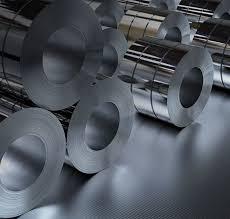The electrical steel market is undergoing a profound transformation, driven by evolving core applications in power distribution, transportation, and industrial automation. The strategic development of advanced electrical steel variants is central to modernizing global infrastructure, improving energy efficiency, and supporting electrification across industries. From transformers to electric motors, the material’s functionality and performance metrics are now aligned with higher technological and sustainability expectations.
Core applications of electrical steel are primarily divided between grain-oriented electrical steel (GOES) and non-grain-oriented electrical steel (NGOES). GOES is predominantly used in transformers due to its high magnetic permeability in a preferred direction, which reduces core loss during energy transmission. The transformer segment, both in power generation and distribution, remains one of the largest consumers of GOES, especially as countries upgrade aging grids and build new infrastructure to integrate renewable energy. Transformer manufacturers are increasingly demanding GOES with lower core losses and thinner laminations, facilitating more compact and efficient designs.
At the same time, non-grain-oriented electrical steel is seeing rapid innovation for use in rotating machinery, such as motors and generators. NGOES is essential for producing electric motors found in everything from industrial drives to HVAC systems, and more significantly, in electric vehicles (EVs). The demand for high-frequency, low-loss NGOES grades is increasing in tandem with the rise in automation, smart factories, and clean mobility. The ability of this material to perform consistently under dynamic load conditions makes it a strategic choice for advanced motor applications.
The growing use of electrical steel in traction motors for electric mobility is redefining quality and design standards across the industry. As electric cars, buses, and trains become more mainstream, the market is moving toward ultra-thin, high-silicon electrical steels that can deliver superior performance while minimizing weight and energy consumption. These advanced NGOES variants must also withstand high operating temperatures and frequencies, posing significant production challenges and innovation requirements for steelmakers. In response, companies are investing in upgraded production lines, enhanced annealing methods, and new coating technologies that improve magnetic properties and corrosion resistance.
Another critical development is the increasing emphasis on compact transformer design. As urbanization intensifies and energy demand grows, utilities are deploying compact substations and pole-mounted distribution transformers in dense city environments. This trend is influencing demand for GOES with higher magnetic induction and reduced iron losses, allowing for smaller, lighter transformers without compromising performance. These requirements are especially relevant for renewable energy integration, where distributed generation systems rely on compact, efficient transformers to manage variable power inputs.
Electrification of the industrial sector is also contributing to electrical steel consumption. From robotics and conveyor motors to pump drives and compressors, energy-efficient motor solutions are essential in minimizing operational costs and meeting energy compliance mandates. The International Energy Agency (IEA) notes that electric motors account for more than 40% of global electricity consumption, making energy efficiency a top priority. As such, electrical steel innovations are critical to producing high-efficiency IE3 and IE4 motors that align with regulatory frameworks and sustainability goals.
Meanwhile, government initiatives and energy policies are accelerating the modernization of transmission and distribution networks. Investment in smart grids, especially in the U.S., Europe, India, and China, is creating fresh demand for electrical steel in transformers and reactors. These infrastructure upgrades often require highly specialized grades of GOES tailored for ultra-high-voltage applications. The evolution of ultra-supercritical transformers and the emergence of next-generation switchgear are pushing manufacturers toward low-loss GOES that meet new electrical performance thresholds.
Supply chain strategies are becoming more integrated, with electrical steel suppliers working closely with equipment manufacturers to optimize material properties for specific applications. This includes collaborative R&D, testing, and prototyping to co-develop grades that match the mechanical, thermal, and magnetic demands of complex end-use equipment. The alignment between steelmakers and OEMs is critical in maintaining competitive advantage and securing long-term supply contracts, especially in the context of volatile raw material pricing and tight global capacity.
Sustainability is another dimension influencing core application trends. Both GOES and NGOES are now evaluated not only by their magnetic efficiency but also by their carbon footprint. Steel manufacturers are adopting cleaner production technologies, including hydrogen-based reduction and closed-loop recycling, to meet the low-emission targets set by downstream customers. These green initiatives are becoming a competitive differentiator in global procurement decisions and are shaping future investment in electrical steel production infrastructure.
Digitalization is streamlining design-to-production workflows in electrical equipment manufacturing. Advanced modeling and simulation tools allow engineers to optimize magnetic core geometry and lamination stacking to minimize losses and heat generation. This design precision reduces the trial-and-error cycles typically associated with motor and transformer development, accelerating time-to-market and improving the end-user value proposition.
In conclusion, the electrical steel market is no longer defined by static supply and basic applications. Strategic developments in transformer and motor design, compact system architecture, regulatory-driven efficiency standards, and sustainability pressures are reshaping demand patterns and innovation priorities. As power grids, mobility systems, and industries continue to electrify and digitalize, electrical steel will remain a pivotal material—one that determines not only the performance of core applications but also their economic and environmental viability.



